A Comprehensive Guide to the Cost of Installing Sod
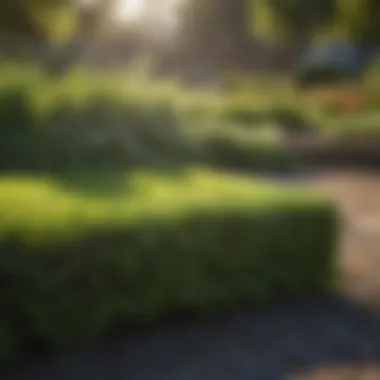
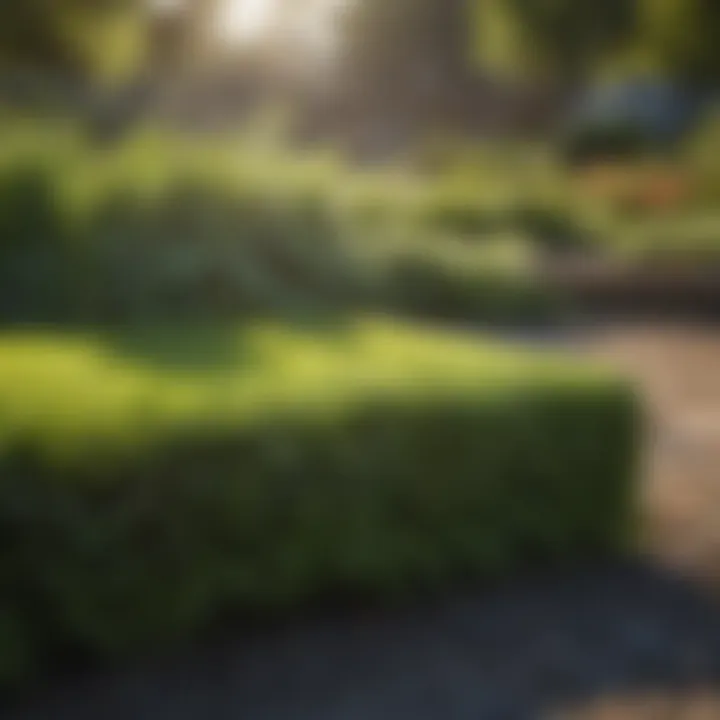
Intro
Starting a sod installation project requires careful financial planning. Many variables contribute to the overall cost. Understanding these factors can lead to more informed decisions. This article will discuss the essential aspects of sod installation costs.
Topic Overview
Definition and Importance
Sod refers to grass and the part of the soil beneath it held together by its roots. Installing sod offers immediate greenery to a landscape. It can transform bare ground into a lush lawn quickly. The importance lies in its ability to enhance aesthetics and provide environmental benefits. A well-maintained lawn can reduce soil erosion, moderate temperatures, and improve air quality.
Brief History and Evolution
Sod has a rich history. Ancient cultures recognized its value, using it for various purposes from agriculture to decoration. As time evolved, sod installation practices improved. Today, advanced farming methods allow for diverse sod types suited to different climates and preferences. Understanding history helps appreciate current practices.
Key Considerations for Cost
Type of Sod
Different sod varieties come at varying costs. Kentucky Bluegrass, for example, is popular but can be expensive. Zoysia grass, on the other hand, is low maintenance but carries its own price point. Factors like durability and climate adaptability affect choices and pricing.
Labor Expenses
Hiring professionals for sod installation is often necessary. Their expertise can ensure proper installation, which avoids future costs related to repairs. Labor rates vary depending on location and complexity of the job.
Soil Preparation
Soil quality drastically affects sod success. Proper testing and amendments may be necessary, adding to the expense. Investing in quality soil preparation can lead to long-term savings by increasing sod longevity.
Maintenance Considerations
After installation, ongoing costs like water, fertilizer, and pest control matter. Understanding these can guide budgeting. Proper maintenance can save resources and expenses in the long run.
Budgeting for Sod Installation
Creating a Detailed Budget
It's essential to itemize all costs. Consider:
- Type of sod
- Quantity required
- Labor costs
- Soil amendments
- Ongoing maintenance costs Creating a clear budget helps manage funds effectively.
Potential Savings Opportunities
There are avenues for savings when installing sod. Buying in bulk may reduce the per square foot price. Choosing drought-resistant grasses can cut water costs. Additionally, seeking local grants or assistance programs can offset installation expenses.
"Planning and understanding costs beforehand can make a significant difference in the overall project success."
In summary, taking the time to understand the financial aspects of sod installation is vital. With knowledge of sod types, labor, soil needs, and maintenance, homeowners and gardeners can make informed choices. This ensures a beautiful, thriving lawn while managing costs effectively.
Understanding Sod Installation Costs
Understanding the costs associated with sod installation is crucial for anyone looking to enhance their landscaping. Many factors contribute to these costs, and a clear grasp can assist homeowners and gardeners in making informed decisions. Knowledge of sod installation expenses ensures that you budget effectively and avoid unexpected financial burdens. This section covers various aspects that affect costs and why they matter in the overall process.
Definition of Sod
Sod refers to a section of turf and the underlying soil that is held together by the roots or a thin layer of earth. It is a popular choice for lawns, parks, and sports fields due to its immediate visual appeal and usability. Sod can be sourced commercially and comes in various types depending on the grass species chosen for the installation. Understanding sod is essential for selecting the right variety for your specific climate and use.
Importance of Sod in Landscaping
Sod plays a significant role in landscaping projects. Its benefits include:
- Instant Green Space: Unlike seed, sod provides immediate greenery, making it perfect for quick landscape enhancements.
- Soil Erosion Control: It helps in stabilizing soil, preventing erosion, and avoiding runoff.
- Temperature Regulation: A sod lawn can cool surrounding areas, improving comfort during hot weather.
- Environment Impact: Healthy sod improves air quality and absorbs carbon dioxide effectively.
Installing sod is more than just an aesthetic choice; it is a practical decision that can lead to long-term environmental and financial benefits. Hence, comprehending the associated costs helps in recognizing the value sod brings to your landscape.
Factors Influencing Sod Installation Costs
Understanding the factors that influence sod installation costs is crucial for anyone considering this type of landscaping. Several elements come into play, and recognizing their impact can enable better decision-making. These elements include the type of sod selected, the area size for installation, the necessary soil preparation, the geographic location, and the labor costs that might be incurred. Each of these factors contributes to the overall financial commitment required for sod installation, making it essential to analyze them in depth.
Type of Sod
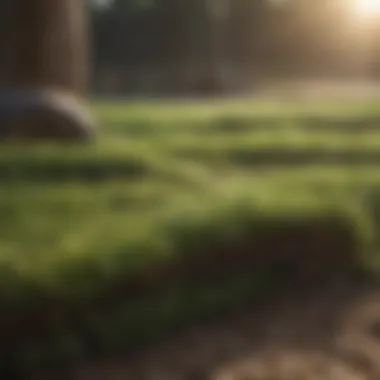

Cool-season grasses
Cool-season grasses are typically planted in regions that experience cold winters and moderate summers. They thrive when temperatures are cooler, usually around 60 to 75 degrees Fahrenheit. A key characteristic of these grasses is their lush, green appearance even in cooler months. Popular varieties include Kentucky bluegrass and tall fescue.
These grasses offer advantages such as better drought resistance and lower maintenance during the fall and spring. However, they can become stressed during hotter summer months, potentially needing more water and care. This aspect could lead to additional expenses in maintaining a healthy lawn.
Warm-season grasses
Warm-season grasses flourish in hotter climates and are best suited for regions with high summer temperatures and mild winters. Common varieties include Bermuda grass and Zoysia grass. Their key characteristic is their ability to stay green and vibrant under sunny conditions.
These grasses excel in energy efficiency and require less water during their peak growing season. However, they often go dormant in cooler weather, leading to a brown lawn during winter. The need for seasonal fertilization and pest management might increase costs during certain times of the year.
Hybrid varieties
Hybrid varieties represent a blend of cool-season and warm-season grasses, resulting in sod that can adapt to different conditions. They typically feature the strengths of both types. For example, they may be more resistant to pests and diseases, which can reduce maintenance costs.
The key characteristic of hybrid varieties is their ability to achieve a dense, lush lawn with prolonged green periods throughout the year. However, these varieties can be more expensive due to advanced breeding techniques and may require specific care instructions that could lead to extra costs.
Area Size of Installation
Measuring the area
Measuring the area where sod will be installed is a fundamental step that impacts cost. Correct measurements help determine how much sod is needed and how to budget for the project. This process often involves using a tape measure or a measuring wheel to calculate the square footage accurately.
The key characteristic here is precision. Accurate measurements will prevent overspending on unnecessary sod and help identify the right amount of preparation needed. However, miscalculating the area can lead to significant budget overruns and waste.
Cost per square foot
The cost per square foot is an essential factor in estimating the total expense of sod installation. This metric allows homeowners to gauge how much they will pay depending on their specific area size and sod type.
Typically, costs can vary widely based on the variety selected and local labor rates. Understanding this cost makes it easier to compare different sod options and plan budgets effectively. However, opting for cheaper sod may result in higher long-term maintenance costs if those grasses do not perform well under local conditions.
Soil Preparation Requirements
Testing soil quality
Testing soil quality is a critical step before laying sod. This process helps homeowners understand the nutrient levels and pH balance of their soil. Testing can be conducted through local agricultural extension offices or private labs.
The unique feature of soil testing is its ability to inform necessary amendments for optimal sod growth. If soil quality is poor, additional costs for fertilizers or soil conditioners may arise. Ignoring this step could lead to sod not establishing well, resulting in a wasted investment.
Amending soil conditions
Amending soil conditions may be required based on the results of the soil test. This could involve adding organic matter, altering pH levels, or improving drainage. Each of these efforts can incur additional costs but is essential for ensuring healthy sod growth.
The key characteristic of amending soil is its long-term benefits. Well-prepared soil can lead to robust, disease-resistant lawns. However, if not done correctly, these amendments may add unexpected expenses to the project without guaranteeing better results.
Geographic Location
Local labor costs
Local labor costs can significantly impact sod installation expenses. Rates often vary based on regional economic conditions and labor availability. In urban areas, labor costs tend to be higher due to increased demand for landscaping services.
Recognizing these costs helps homeowners budget accurately. If labor costs are on the higher side in a particular area, homeowners might consider DIY options to save money. Although it may appear as a cost-saving strategy, inadequate installation can lead to long-term issues that may exceed initial savings.
Regional sod availability
Regional sod availability dictates prices, as transportation costs and supply and demand play vital roles. In areas with abundant sod farms, prices are often lower due to competition. On the other hand, remote regions might face higher costs due to shipping charges.
Understanding local sod options ensures homeowners can make informed decisions about quality and cost. Choosing sod from local producers not only saves money but also increases the chances of successful establishment as the grass varieties are often suited to local conditions.
Labor Costs
Hiring professionals
Hiring professionals can provide expertise in sod installation, which may result in a lush, healthy lawn. Experience in preparation and installation plays a significant role in outcomes. When hiring lawn care professionals, their rates will typically reflect their experience and quality of work.
This option, while more costly initially, might yield better results compared to DIY attempts. Professionals usually come with warranties that cover sod performance for a specific period. However, if the homeowner is on a tight budget, professional services could be a significant financial strain.
DIY installation
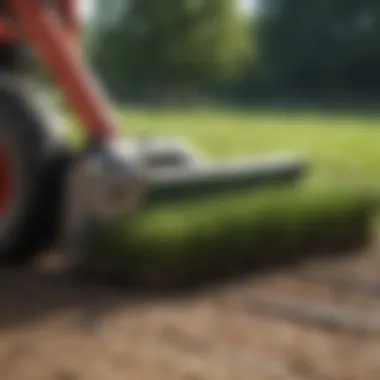
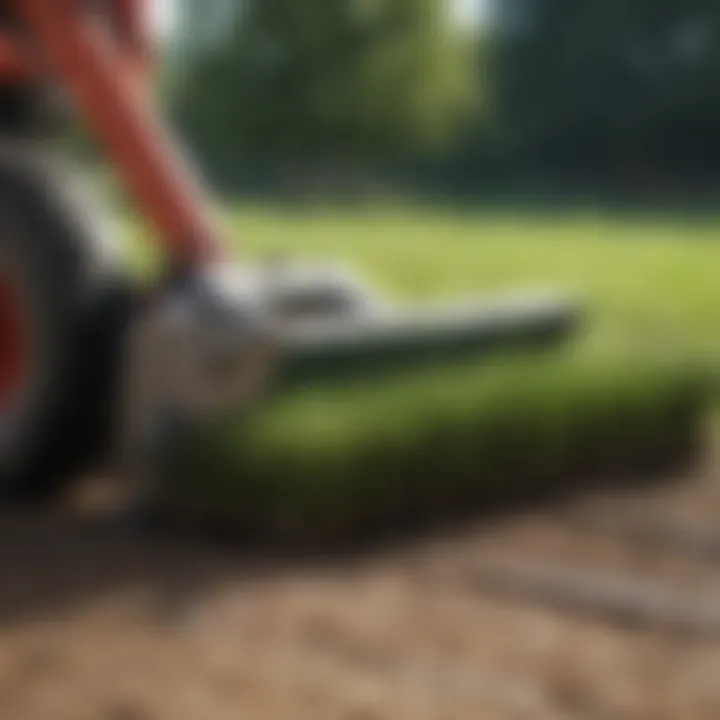
DIY installation offers a cost-friendly approach for homeowners willing to put in the time and effort. Knowledge of proper installation techniques can further reduce costs related to hiring professionals. This method can create a sense of ownership over the lawn, adding personal satisfaction.
However, without adequate knowledge, the possibility of failure increases. Errors in preparation or installation can lead to subpar results, costing both time and money in the long run. Therefore, weighing expertise against budget constraints is essential in this decision-making process.
Estimating Total Costs
Estimating total costs is a critical aspect of the sod installation process. Understanding the expenses involved helps homeowners and landscapers make informed financial decisions. When managing a sod installation project, it is essential to account for both material and labor costs. This ensures that budget expectations align with reality.
Calculating Material and Labor Costs
Material costs refer to the price of purchasing the sod itself. Prices vary based on the type of sod selected, with some grasses being more expensive than others. For example, hybrid varieties may command higher prices due to their superior characteristics. Labor costs involve hiring professionals or the value of time spent on a DIY project.
The total cost can be calculated by estimating the number of square feet to be installed and multiplying it by the cost per square foot. Additionally, labor costs should be factored in, whether hiring a professional or considering the expense of time lost in a DIY endeavor.
Incorporating Additional Expenses
One should not overlook additional expenses that can influence the overall budget for sod installation. There are often hidden costs that can arise.
Delivery Fees
Delivery fees can significantly affect the total cost of installing sod. This is particularly true if the supplier covers a long distance. The key characteristic of delivery fees is that they can vary widely. Understanding the delivery charges ensures that the estimated total reflects the actual expenses. It is beneficial to clarify these charges up front. Some suppliers may offer free delivery above a certain order amount, thus potentially reducing costs if buying in bulk.
Irrigation Setup
Irrigation setup is also a vital consideration. Ensuring newly laid sod receives adequate water is crucial for its establishment. The costs can vary depending on the complexity of the irrigation system needed. A simple hose system is less costly compared to a full underground setup. What makes this aspect stand out is its long-term benefit; investing in a proper irrigation system will facilitate watering and can lead to healthier grass. However, initial costs can be high, and they must be reflected in the total budget to avoid surprises during installation.
Estimating total costs accurately allows for better financial planning and prevents unexpected expenses during sod installation.
Budgeting for Sod Installation
Budgeting for sod installation is a critical component of the entire process. A well-planned budget helps in managing costs effectively and ensures that there are no surprises during the installation. Understanding the expenses involved is fundamental, as it allows homeowners to allocate resources wisely and avoid overspending.
A comprehensive budget should encompass various elements related to the sod installation project. This includes direct costs like the sod itself and labor, as well as indirect expenses that may arise, such as additional tools or materials needed for soil preparation. Having a clear financial plan enables individuals to identify what they can afford and to make informed choices that align with their landscaping goals.
Furthermore, establishing a budget helps in prioritizing expenditures. It allows for clear visibility of necessary expenses versus optional add-ons, enhancing the overall planning process. In summary, creating a realistic budget sets the groundwork for a successful sod installation.
Creating a Realistic Budget
When creating a realistic budget, the first step is to conduct thorough research on the types of sod available and their associated costs. Different varieties come at varying price points, so it is important to compare options before making a decision. Additionally, consulting with local suppliers can provide insights into current market trends and help in estimating costs accurately.
Next, you should assess the size of the area where the sod will be installed. This can usually be measured in square feet. A good way to calculate the total amount of sod needed is to visit your local home improvement store or garden center. This can provide clarity on how much sod is necessary, which directly affects your budget. Remember to account for a little extra sod to cover any potential mistakes during installation, typically around 5-10% more than the calculated amount.
Prioritizing Key Expenses
Prioritizing key expenses can streamline the budgeting process. Start with the essentials: sod, soil amendment materials, and labor. Labor costs can vary significantly depending on whether you choose to hire professionals or take the do-it-yourself route. Recruiting a reliable installer necessitates understanding what is included in their service.
Some expenses might be optional but can greatly enhance the outcome of your project. For instance, investing in good quality topsoil or proper irrigation systems might represent an additional cost but can ensure the longevity and health of your newly laid sod. Categorize these expenses into necessary and optional, enabling better financial management.
"A detailed budget not only helps in identifying necessary expenses but also prepares you for potential add-ons later on in the process."
Potential for Unexpected Costs
Even with careful planning, there is always potential for unexpected costs to arise during a sod installation project. Natural events such as bad weather can delay the installation, leading to increased labor or material costs. It is prudent to set aside a contingency fund within your budget, typically around 10-20% of the total project cost.
Other unexpected costs could come from soil quality issues. If your soil is found to be inadequate for sod growth, additional treatments or even removal may be required. These hidden fees can add up, so evaluating the initial soil conditions is a crucial step in safeguarding against unforeseen expenses.
In summary, budgeting for sod installation is not just about knowing the costs upfront. It involves creating a plan that accommodates essential expenses, prioritizes key components, and prepares for the unexpected. By adhering to these guidelines, homeowners can ensure a smoother installation process, leading to a healthier and more beautiful lawn.
Saving on Sod Installation Costs
Saving on sod installation costs is a crucial aspect for homeowners and enthusiasts looking to enhance their landscaping without breaking the bank. Understanding strategies to minimize expenses can lead to significant savings while still achieving a healthy and vibrant lawn. It is important to factor in not just the direct costs of sod but also the broader financial implications related to preparation, installation, and ongoing maintenance.
Some effective methods exist for reducing costs. Key strategies include timing your purchase effectively, exploring local deals, and choosing the right installer. Each of these approaches can offer distinct advantages while ensuring high-quality results in sod installation.
Timing Your Purchase
Timing your purchase strategically can greatly influence the overall cost of sod installation. Typically, sod prices fluctuate based on seasons and demand. Purchasing sod during the fall or early spring often yields lower prices, as these times align with off-peak installation seasons.
"Seasonal fluctuations in price provide an opportunity for homeowners to attain quality sod at a lower price."
In addition, local nurseries or sod farms may run promotions during slow seasons, further incentivizing buyers to act during these times. Evaluating weather patterns and understanding the best times to plant based on regional climates can also contribute to a more economical purchase. Choosing to procure sod when it is abundant can translate to significant savings for the installation project.
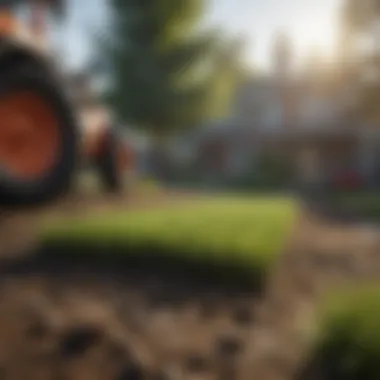
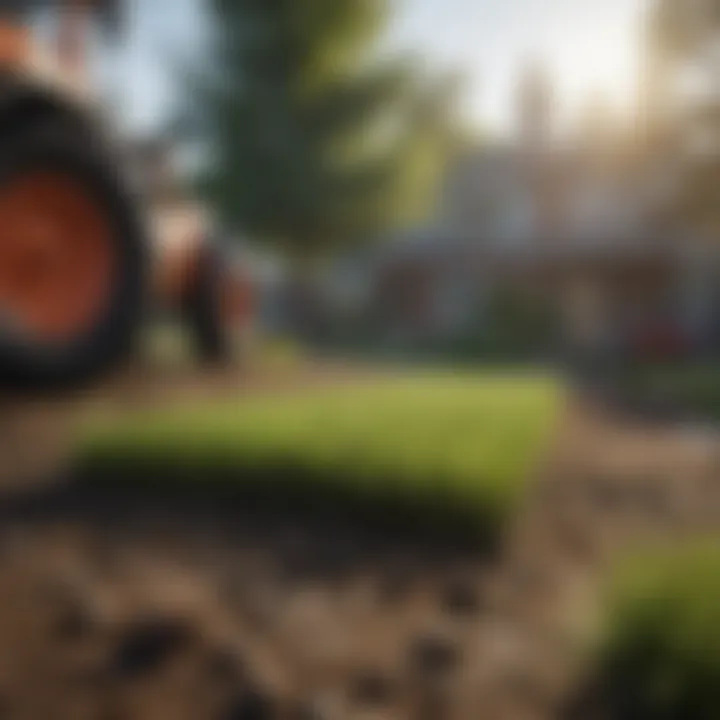
Exploring Local Deals and Discounts
Another effective method to save on sod installation costs is to look for local deals and discounts. Many sod suppliers, garden centers, or home improvement stores offer periodic sales or discounts. Joining community gardening groups or following social media pages focused on local gardening can provide insights into upcoming sales and special promotions.
Additionally, purchasing sod in bulk or during seasonal sales can offer substantial savings. Some retailers might also provide discounts for cash payments. Inquire about any membership programs that offer exclusive discounts to members. Taking the time to seek out these deals can help in significantly reducing the overall expenses involved in sod installation.
Choosing the Right Installer
Hiring the right installer is another vital component that can determine whether you spend more or save during the sod installation process. Obtaining comparative quotes is essential in this regard.
Comparative Quotes
Comparative quotes allow homeowners to evaluate various installers based on their pricing, services, and customer feedback. This process is beneficial as it facilitates informed decision-making.
Interestingly, the key characteristic of comparative quotes is how they provide a transparent view of what to expect. By comparing multiple installers, one can identify the most reputable options that fit within a budget. It is a beneficial practice as it reveals estimated costs and helps to clarify what is included in each quote, which can vary significantly.
However, it is essential to consider that the lowest quote does not always represent the best choice. An installer with a competitive price might lack quality in service or materials. This highlights the unique feature of comparative quotes: they not only help in finding the best deal but also in assessing the quality of service.
References and Reviews
In addition to obtaining comparative quotes, it is vital to check references and reviews. Recommendations from previous clients can provide insight into the reliability and quality of service offered by different installers.
In this context, the key characteristic of references is their ability to validate the claims made by potential installers. Relying on firsthand experiences can guide homeowners in determining whether an installer fits their needs.
Furthermore, reading online reviews on platforms like Reddit or Facebook can reveal patterns of satisfaction or dissatisfaction among previous customers. These insights can steer an individual towards trustworthy options and help one avoid poor choices. Although references and reviews are usually reliable, they should be taken in conjunction with other factors such as pricing and services to form a comprehensive evaluation of potential installers.
Post-Installation Considerations
Post-installation considerations are vital to ensure the longevity and health of newly laid sod. After the initial installation, the care you provide in the following weeks has a significant impact on how well the sod takes root. Understanding the maintenance needs and the potential long-term costs is essential for any property owner looking to maximize the return on their sod investment.
Maintenance Requirements
Watering schedules
Watering is perhaps the most critical aspect of sod maintenance. Newly installed sod needs consistent moisture for successful establishment. A general practice is to water deeply and infrequently, promoting deeper root growth. Newly laid sod typically requires daily watering for the first two weeks, ensuring the sod is moist but not soaked to prevent rot. After this period, the watering frequency can reduce to a couple of times a week, depending on the season.
This method is beneficial as it encourages roots to grow deep into the soil, making the sod more resilient over time. The unique feature of a well-planned watering schedule is that it adapts to weather conditions; in hotter months, frequency may need to increase. The disadvantages include the potential for overwatering, which can lead to fungal issues or shallow root systems. Keeping a schedule adjusts for precipitation is essential for achieving optimal health in your sod.
Mowing techniques
Mowing is another important maintenance procedure that contributes to the health of grass. Once the sod has established itself, typically after three weeks, it's time to mow. The general rule is to never remove more than one-third of the grass blade height in a single mowing session. This promotes healthy growth and allows the plants to retain enough leaf surface for photosynthesis.
The characteristic of proper mowing is that it can lead to a denser lawn. Frequent, gentle mowing prevents the grass from growing too tall and promotes lateral growth, creating a lush carpet of grass. However, a downside is that improper mowing can lead to scalping, which damages the grass and leads to unsightly patches. Hence, understanding the proper technique also includes the ideal height settings for different types of sod.
Long-term Cost Implications
Long-term costs can influence how you budget for sod care. Beyond the initial investment, maintaining a healthy lawn requires financial planning.
Fertilization regimes
Fertilization is essential for sustaining sod health and vitality. Using a balanced fertilizer every 6 to 8 weeks during the growing season promotes strong growth. The key characteristic of a good fertilization regime is its improvement of soil nutrient levels, which enhances the overall appearance and health of your lawn. Choosing a product that is specifically designed for your type of sod can yield the best results.
However, over-fertilization can cause rapid growth which may require more frequent mowing, and runoff can lead to environmental issues. Therefore, it is wise to analyze your soil's nutrient needs before applying fertilizers to minimize waste.
Pest management
Pest management is another aspect that affects long-term costs. Incorporating preventive measures reduces the need for costly treatments down the line. The key here is monitoring for common pests such as grubs or fungi, which can devastate your new sod quickly.
A proactive approach to pest management includes creating a healthy lawn ecosystem. This can be achieved by maintaining proper mowing and watering practices. If problems arise, the downside is that treatment can get expensive. Pesticides and specialized treatments can cut into your budget, highlighting the importance of ongoing maintenance to prevent infestations.
In summary, the long-term maintenance of sod contributes significantly to its lifespan and overall health. Investing in proper watering, mowing, fertilization, and pest management will ultimately lead to a thriving lawn environment.
Closure
The conclusion serves as a critical synthesis of the various elements discussed in this article about sod installation costs. Understanding the financial implications of installing sod is essential for both novice and experienced gardeners. It informs decision-making and helps prevent overspending.
In this article, we have examined key factors such as the type of sod, labor costs, and the necessary soil preparations. Each component contributes significantly to the overall cost. Having clarity on these aspects enables individuals to plan more effectively.
Benefits of a well-structured approach include:
- Cost prediction: Anticipating expenses leads to better budgeting.
- Resource allocation: Knowing what to prioritize can optimize spending on sod installation.
- Avoiding common pitfalls: Awareness can help in steering clear of unexpected financial burdens.
Each decision made during the sod installation process can have long-term effects on not just the immediate landscape, but also on ongoing maintenance and resource consumption. Given the importance of sod in landscaping, the financial understanding of its installation stands front and center, aiding in both aesthetic enjoyment and ecological balance.
Ensure that you have a clear budget and a good understanding of all costs and responsibilities before starting the project. This will lead to successful sod installation and long-term satisfaction.
By recapping the critical points raised in the previous sections, the importance of a thoughtful approach to the economics of sod installation becomes abundantly clear. A well-planned project fosters not just a beautiful outdoor space but also a sustainable economical investment.



